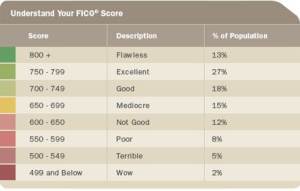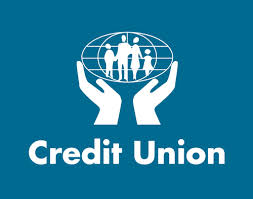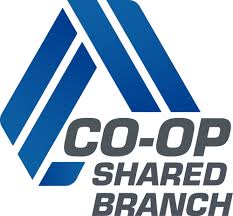Let’s begin with the US Government’s official position on Credit Repair. As stated by the Federal Trade Commission (FTC), which we will summarize only time and the proper use of credit will improve your credit rating. While there is merit to this statement, the logic behind the statement assumes a perfect system. Let me assure you, the credit reporting system is far from perfect. In fact, CBS News found that nearly 80% of all credit reports contain errors.
The good folks at the FTC may be unaware of how difficult it is for most consumers to get the three credit reporting agencies (CRAs): TransUnion, Experian and Equifax to correct errors. In my experience, a consumer must engage in the challenge of correcting credit errors with great persistence in order for the correction and/or deletion to be made. This can take months of continuing to send the same challenge(s) with the same properly written very brief letter.
It has been said that insanity is doing the same thing over and over again and expecting different results. However, in the case of getting corrections and/or deletions made on your credit report, you must do the same thing over and over in order to get the desired results. This is a situation where, in many cases, one must make continual identical challenges to achieve the desired results.
Beware – The on-line links to the credit bureaus’ auto dispute systems will encourage you to sign up for their expensive subscription service. Be very wary of their systems of gotchas. In our experience, these subscription services are a waste of both time and money. As discussed in this blog, these links lead only to what we call FAKO scores. These are not the real deal! Frankly, we can find no good reason for consumers to improve the profits of any of the mega corporations also known as the CRAs.
Step one, get a copy of your official free credit report by clicking on www.annualcreditreport.com. Step two, begin disputing the items you believe are incorrect. Step three, repeat step two as necessary – generally every 30 days.
Sample Dispute Letter
Date
Your Name
Your Address,
City, State, Zip Code
Name of CRA
Dispute Department
Address
City, State, Zip Code
Dear Person:
Pursuant to the Fair Credit Reporting Act 15 § USC 1681i, I am writing to dispute the following information in my file. The items I dispute also are encircled on the attached copy of the report I received.
This item (identify item(s) disputed by name of source, such as creditor name, and account number, judgment, and case number, etc.) is (inaccurate) because (describe what is inaccurate). I am requesting that the item be deleted to correct the information.
Enclosed are copies of (use this sentence if applicable and describe any enclosed documentation, such as payment records, court documents) supporting my position. Please investigate this (these) matter(s) and (delete or correct) the disputed item(s) as soon as possible.
Sincerely,
Your name
Enclosures: (List what you are enclosing if anything.)
Before you send your dispute letter, reread it to make sure you are not admitting the fault is yours, and not that of the credit reporting company or creditor. If you do make an admission, you are providing evidence against yourself. Think of the Miranda Warning as you write your letter. Everything you write can and will be used against you. So be careful with what you write. The fewer words written, the better. Less is more.
Resend your dispute letter every 30 days until you achieve the results you want. You need to understand that you will get the standard reply letters and occasionally a letter saying the dispute is not correct. You don’t want to become discouraged. Ultimately, persistence will help the system work for you.
Copy the creditor (e.g. ABC Mortgage Company) you are disputing with the letter you send to the CRAs. Most creditors have a particular dispute or legal address which is easily found with a little research (Google it). To be clear, the dispute address is not the same address to where you send your payment. You must use the legal address such as where a legal document would or will be served.
Avoid credit report scams by heeding this FTC information for credit consumers. Legitimate credit repair firms operate in compliance with the Credit Repair Organizations Act and do not charge fees for work not yet done.
If you have an IRS Lien on your credit report, check this recently launched IRS Form which, if utilized properly, could eliminate an IRS Lien from your credit report. This will not eliminate the tax debt. You should enlist professional help in completing this form.
Don’t become discouraged you can get corrections and deletions accomplished however; I encourage you to read the following post from the Consumer Finance Protection Bureau (CFPB) and in particular some of the comments tendered by other consumers. Is your credit report wrong? How to find out and fix it.
Know what you are doing and what the potential ramifications are when it comes to applying for a mortgage. Any dispute must have been resolved and withdrawn from your credit report prior to being approved for a mortgage.
Caution – “We’ve Never Seen a Legitimate Credit-Repair Operation,” is an apt observation tendered by Steven Baker, Director of the FTC’s Chicago regional office.
Final Caution – For so long as there are unresolved disputes reported on your credit, you will be locked out of getting a mortgage loan approval. On this, also see the comments section of this blog as well as the comments section for the up to date particulars.
We wish you success!
John Oliver on Credit Reports. The iconic comedian takes a serious yet, humorous view of credit reports. You may need a smile as you deal with any of the three institutions of credit reporting and the creditors reporting data to them.
Image attribution (top) Image attribution (bottom)
Financially Speaking™ James Spray, RMLO, CNE, FICO Pro CO LMO 100008715 | NMLS 257365 |Notice: The information on this blog is opinion and information. While I have made every effort to link accurate and complete information, I cannot guarantee it is correct. Please seek legal assistance to make certain your legal interpretation and decisions are correct for your situation. This information is not legal advice and is for guidance only. You may reproduce this information in whole and not in part, providing you give full attribution to James Spray.














